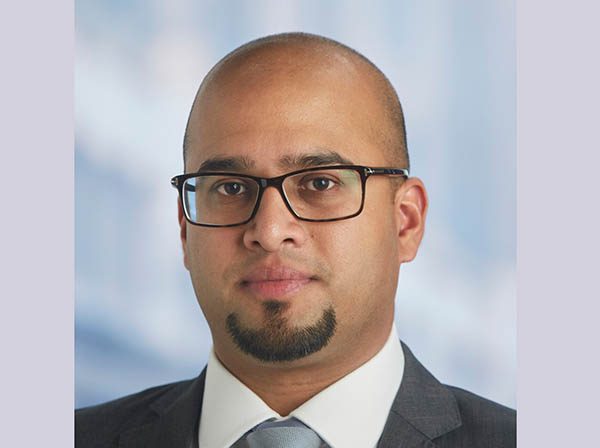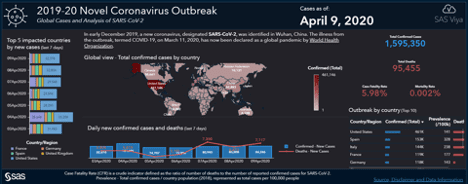
Click to learn more about author Sundeep Tengur.
As the world faces an unprecedented threat from the coronavirus pandemic, our daily lives have been severely disrupted by social distancing, self-isolation, quarantines, and other measures meant to prevent its spread. While fighting fraud seems mundane compared to fighting COVID-19 and saving lives, both battles rely on similar scientific methods and good governance to be effective.
As the urgency to contain the virus continues, many unscrupulous individuals have found ways to exploit the vulnerable and perpetrate fraud. Media outlets around the world have reported on all manner of schemes: tax refunds and credit card scams, faux COVID-19 testing kits or “cures” for sale, WHO-branded phishing emails with malware-infected attachments, and more.
As our governments and health organizations work to contain the virus, industry must adopt strong measures to make our “borders” less permeable to fraud. Five primary tactics being leveraged to combat the pandemic can likewise fight fraudsters and organized criminal rings seeking to take advantage during this crisis.
Isolate Cases
One of the early measures implemented from the start of the COVID-19 outbreak has been to isolate suspected and confirmed cases. Isolation helps prevents the spread of infection and provides a focused group on which to apply treatments and curative measures.
In the fraud arena, anomaly detection is the key measure to understand significant deviations from normal patterns. Similar to how a COVID-infected patient exhibits symptoms like a fever and a dry cough, fraud indicators also stand out as atypical — a transaction amount that is significantly higher than the historical average, for example, or transactions initiated at odd times with device and geolocation attributes inconsistent with the victim’s profile.
Outlier segments are not always the result of fraud, of course, but they do warrant attention and deserve to be treated differently. As we’ve seen from the coronavirus outbreak, some groups are more vulnerable than others, so it’s safe to say that a one-size-fits-all approach isn’t as effective. The same applies to fraud.
Public and Private Partnerships
We are all in this together: fighting the pandemic, mitigating social scourges like fraud, and using data for good. As soon as scientists sequenced the SARS-CoV-2 genome in February, it was made available to the rest of the world. Several governmental health agencies and private labs have since joined the race to develop a vaccine. Around the world, a growing number of companies are redeploying production lines to help combat this crisis — perfumers and alcohol distillers producing hand sanitizers, automakers and tech companies manufacturing critical medical supplies and equipment, etc.
Imagine the same spirit of partnership and collaboration wielded to deter fraud. For far too long, various industries — and companies within those industries — have fought fraud in siloes. With new channels like open banking and integrated models with services like bancassurance, telephony-based payments, etc., it is essential that all relevant players talk to each other and share relevant data.
The value of consortia data is well-established in financial services in facets like auto insurance claims and credit cards, but it remains nascent in many areas that could equally benefit, including counter-terrorism financing, border control, public security, non-card payments, and identity authentication.
Educate and Inform
Our social media feeds overflow with coronavirus news and updates, legitimate reporting from reputable sources combined with a lot of misinformation. Drinking water every 15 minutes to prevent coronavirus? Holding a deep breath for 10 seconds to self-diagnose? These widely circulated examples are proven myths, but they illustrate an important point. Whether by naïveté or malicious intent, people remain the weakest link.
On the fraud front, surging social engineering schemes and authorized push payments are proof of how easily people can be conned. It’s therefore critical to educate the public, especially those most vulnerable. While anti-fraud information campaigns led by banks and governmental agencies are essential, it is incumbent on social media platforms — and each of us as users — to check the veracity of information to better curb the spread of lies and schemes.
Look at the Bigger Picture
A blinkered view of any problem increases the likelihood of misdiagnosing its root causes. Many health professionals initially mistook COVID-19 for (or dismissed it as) a severe flu. Looking at the contagion rate and the climbing casualties in hindsight, it’s blatantly obvious that we are dealing with a more formidable and deadly foe.

Likewise, fraud professionals must look at the bigger picture to gather context and make better-informed decisions. For example, entity-based detection systems may trigger CNP (card not present) fraud alerts on individual cards, effectively stopping specific transactions, but they may miss other cards or customers affected by the same issue. With overarching techniques like entity-resolution and social network analysis, investigators might detect that these CNP fraud cases are linked to the same ATM or merchant, potentially a rogue player or one compromised by malware.
Prevention Over Cure
In the fight against disease and fraud alike, an ounce of prevention is worth a pound of cure. To stem the spread of COVID-19 infections, municipalities the world over are embracing lockdowns, measures of quarantine, self-isolation, and social distancing — vital tactics to curb crippling hospital admissions and the rising death toll. The eventual lifting of these restrictions will be contingent on robust, proactive public health surveillance programs.
Proactive surveillance and prevention measures are equally critical to stem fraud losses. Analytics can help — particularly as fraudsters’ tactics, like viruses, evolve. Predictive modeling can help fraud teams move more into prevention mode versus “pay and chase.” Whether it’s supervised learning, which leverages historical data to predict risk, or unsupervised learning, which is agnostic of confirmed historical frauds, predictive models provide clarity on the best course of action, making optimal use of resources and ensuring efficacy.
Detecting cases is but a first step in our global fight against COVID-19. The same is true in fraud-fighting. The end game is no longer just about detection, but rather a layered approach to security that frustrates and confounds criminals — in essence, making their schemes less “transmissible.” While we will never completely eradicate fraud the way we hope to defeat COVID-19, with optimal tools to transform siloed data into actionable intelligence, we can make ourselves less susceptible.
